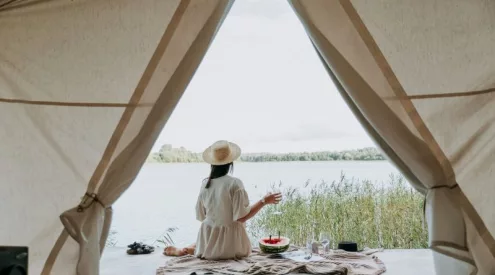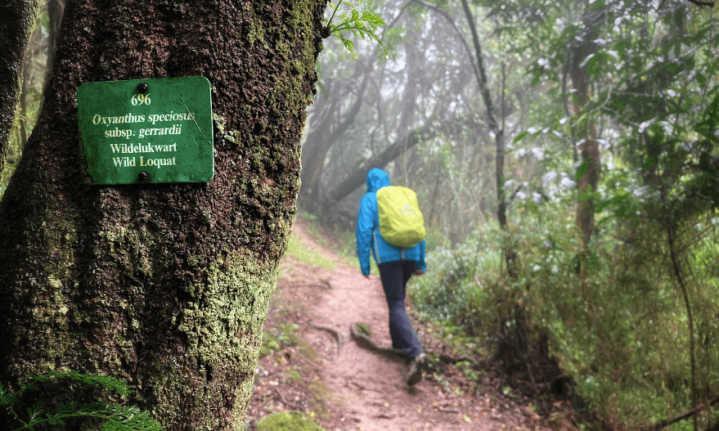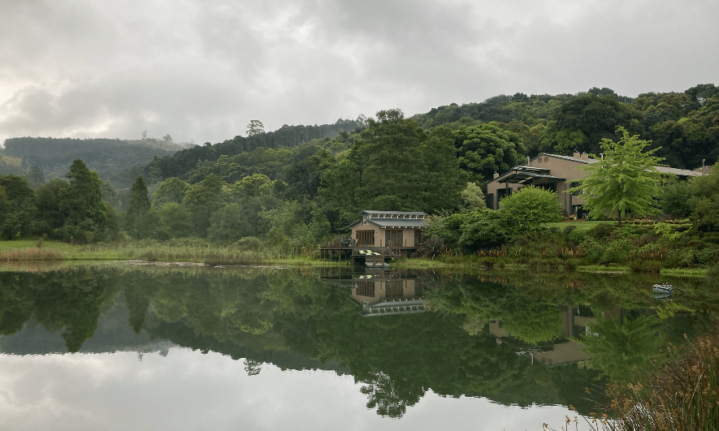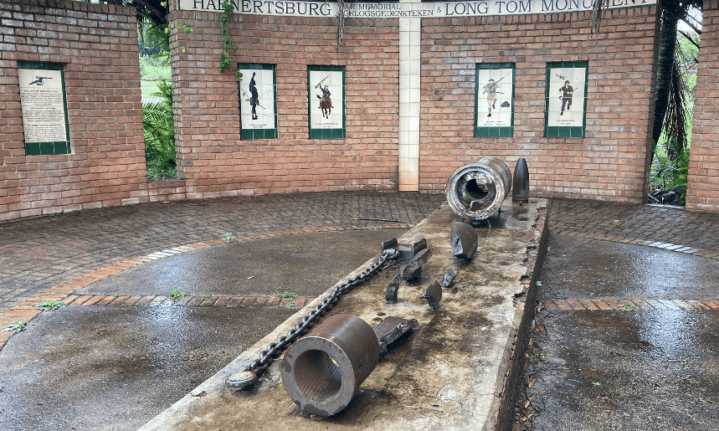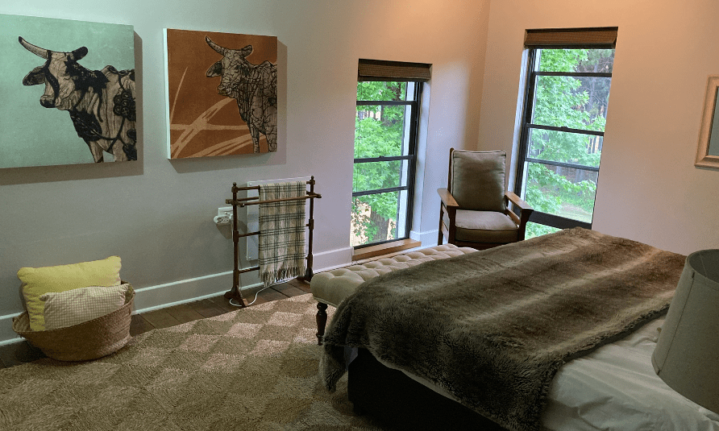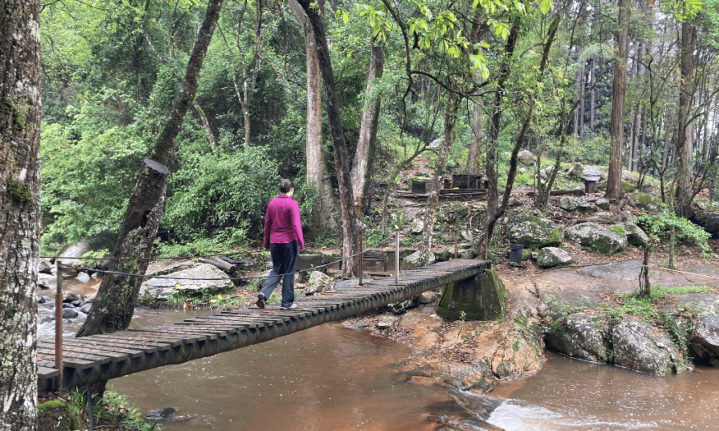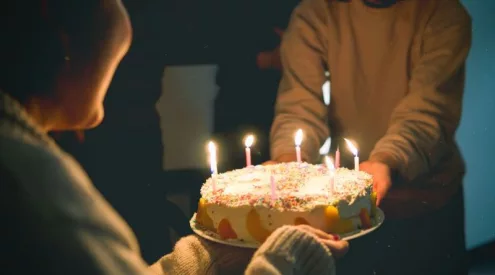Rainforest walks, grassland trails, zip-lining over mountain rivers, and breathtaking vistas… All that and more awaits visitors to Magoebskloof, a mountain enclave in Limpopo, tucked in between Polokwane and Tzaneen.
Words and photos by Mark Samuel
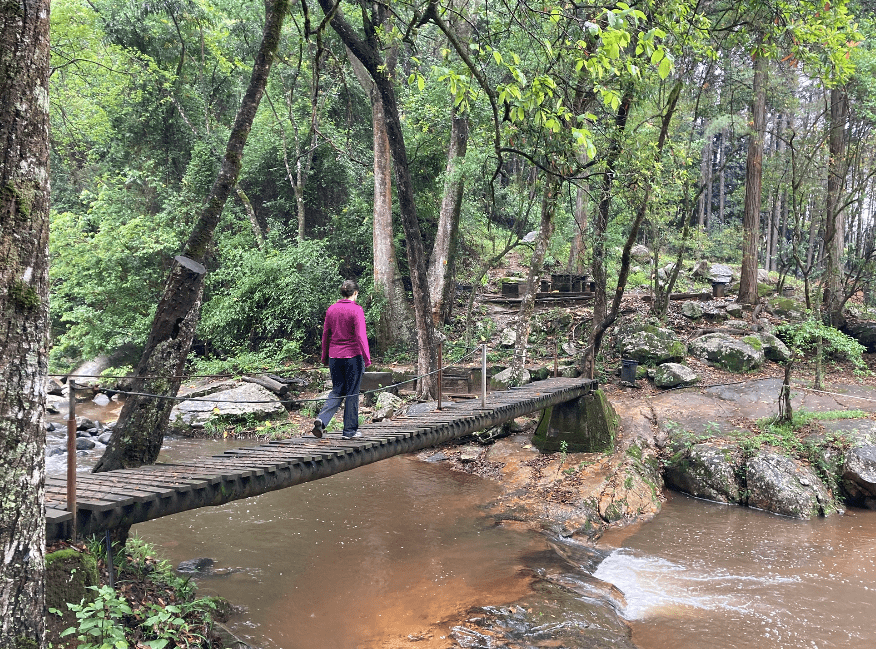
We’d turned off the N1 onto the R71, happily cosseted in the plush cabin of the new Land Rover Discovery. After an early red-eye flight from Cape Town, we’d collected the vehicle at OR Tambo airport. In this protective bubble, we were separated from the searing heat of Limpopo’s Polokwane district. I was cool and comfortable, but also silently questioning our decision to choose Magoebaskloof as the destination for our week-long holiday… We hadn’t quite yet reached the kloof, but at that moment the landscape around us was dry and barren. Yellowing, sun-withered vegetation stretched as far as the eye could see, and the car’s read-out said it was 37°C.
While researching our trip, images of Magoebaskloof on the internet promised lush, grassy meadows, perennial rivers flowing strongly from countless gorges and valleys, and trees, trees and more trees. (I suffer from an arboreal addiction, you see.) The GPS was saying we’d reach our destination in 15 km, but the landscape out there was as dry as a bone.
Climate change
Then something remarkable happened. The R71 ahead snaked gently upwards, and as we climbed and our elevation increased, the temperature started to drop. The hues of the landscape began to change, too – yellows became light green, then a shade darker, and then, wherever we looked, the countryside was awash with every tone of green imaginable. Arid brush had made way for leafy bushes, which soon morphed into trees – pockets of indigenous forest, pine plantations, tracts of fruit orchards, and vast expanses of avocados. Ascending the pass, we’d literally driven into the clouds – banks of heavy mist danced through the forests, and the low-light conditions activated the Discovery’s headlights. We’d entered an enchanted mountain wonderland.
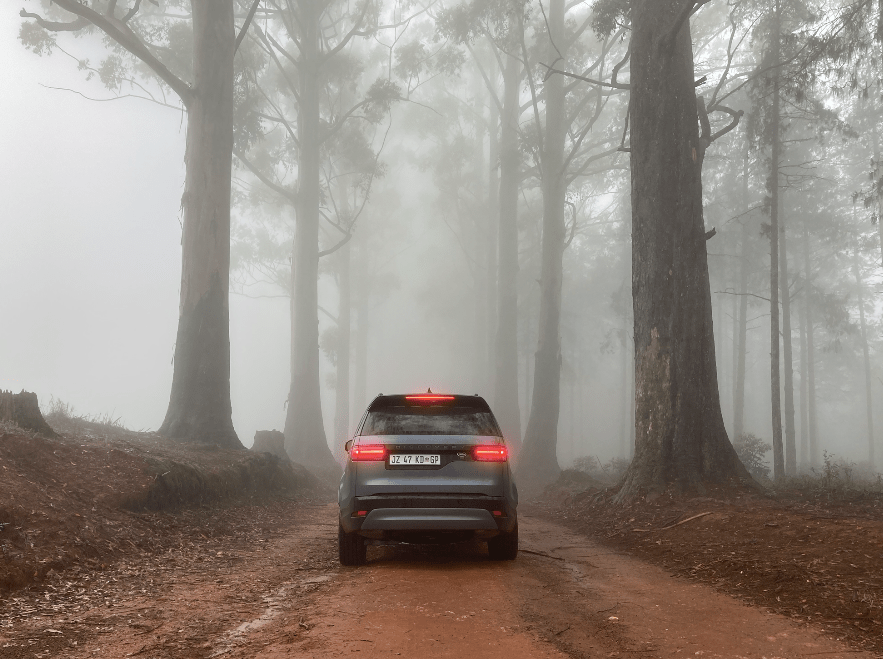
We skirted past Haenertsburg, the only town in Magoebaskloof (and a spot we’d visit later). It’s more of a little village, really, ringed by protected grasslands, and pine plantations, and the expanse of Ebenezer Dam is just around the corner. Journeying onwards, we drove through even thicker mist, then turned off towards Glenogle Farm, the first of our two lodging spots for the week.
Out and about
The indigenous forests are a key element of any Magoebaskloof visit. They’re an irresistible contradiction – chaotic yet pristine, wild yet structured, and the sounds from the critters that live there are ceaseless, a melodic cacophony that leaves you spellbound.
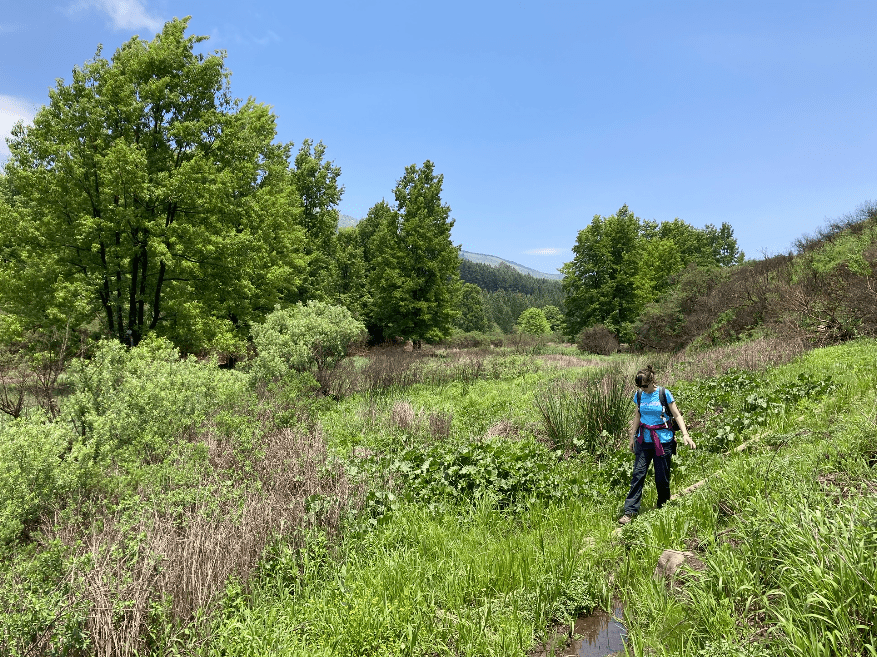
My obsession with these wild places explains why, the next morning, we were strapped into harnesses, and dangling beneath high-tension cables strung up in the leafy canopy of the Groot Letaba River gorge. This section of prime riverside real estate is owned and operated by Magoebaskloof Canopy Tours, and zip-lining through the forest is but one of several adventures they offer. Each outing is led by two guides, who take care of you as you glide from wooden platform to wooden platform through the trees, and zigzag across the swiftly flowing river. Along the way you soar over three spectacular waterfalls, as the sunlight forms rainbows in the billowing spray below.
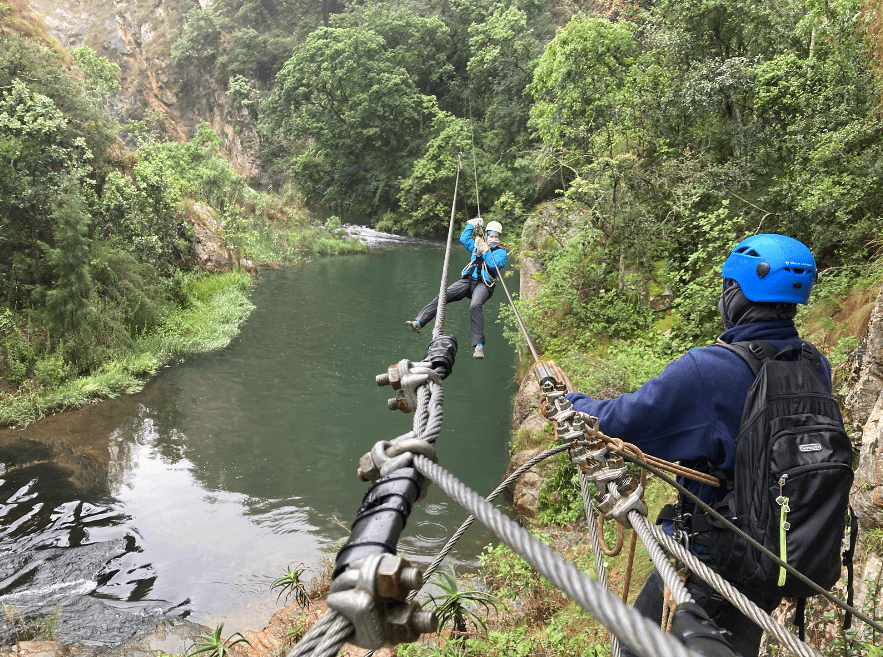
After cappuccinos and buttery toasted sandwiches back at the base, we set off on a forestry road that was something out of a fairytale. Soft rain drifted through the trees as our tyres sloshed along the muddy track, and eerie bird calls echoed through the branches. The whole experience was other-worldly – as if we were exploring the backwoods of Hogwarts, in a Land Rover.
Our energetic morning called for a more relaxed afternoon, so we drove up to the Long Tom monument, a humble setting that played an important part in South Africa’s history. Up on a lonely hill, a plaque on a mound of rocks sits next to a large crater in the ground. This hole was blasted into the earth when the Boers destroyed their last heavy-artillery canon – or Long Tom – on 30 April 1901, to prevent it from falling into the hands of the British armed forces during the Anglo-Boer War. Standing on the adjacent platform, from which you can see the highest peaks of the Wolkberg Mountain Range, I imagined what life here must have been like 120 years ago, as the bush-hardened Boer commandos clashed with the numerically advantaged British.
Rainforests and waterfalls
We parked at the Magoebaskloof Hotel the next morning, and again ventured into the forest, this time on foot, along the Swartbos hiking trail. It’s a relatively easy 4.5 km route that circles through an exquisite tract of indigenous forest. The day was again rainy and cool, and everything around us was soaked.
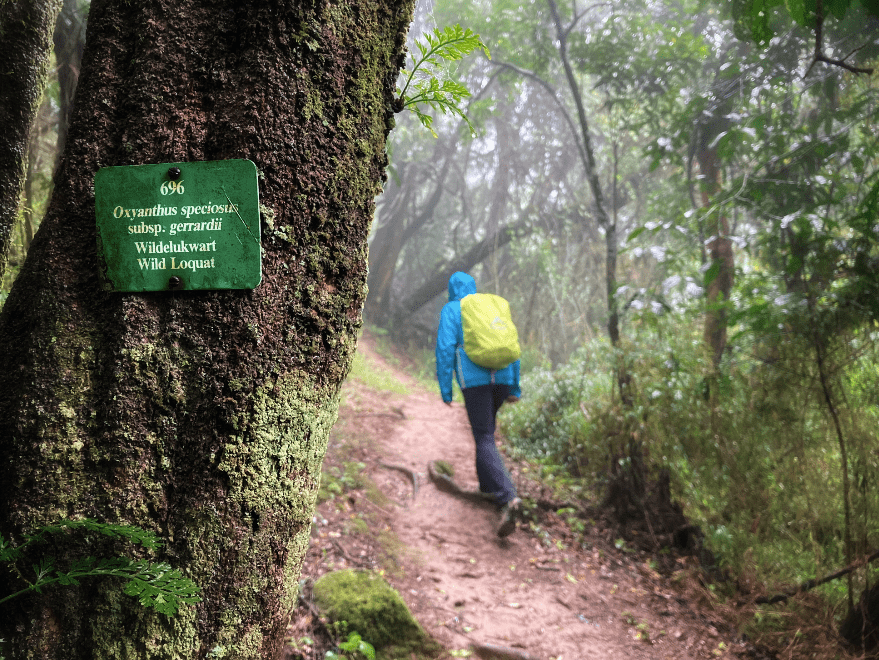
Waves of mist nudged through the trees, and a veneer of moisture coated the mosses, vines and ferns. The effect was almost primaeval. Alongside the path, gnarled roots, trunks and mangled branches weaved an impenetrable web, and a symphony of frog- and bird sounds synchronised to form the perfect backing track.

Back on the tar road and with wet clothes drying on the seats behind us, we navigated the switchbacks of the Magoebaskloof pass, descending several hundred metres in the process. Turning left off the R71, we headed along another forestry track, this time through mature plantations of yellow-woods, mahogany, and many other unusual broadleaved species I’d never seen before, certainly not on this scale. Our drive culminated at Debengeni Waterfalls, an impressive natural feature where the waters of the Politsi River cascade hundreds of metres down the rocky topography, and eventually drain into the Maboebaskloof Dam.
Rare grasslands, and an ice-cold pint
Dawn finally broke clearer at Bramamsole Guest House later in the week, to which we’d relocated the previous evening. (See ‘Stay here’ info at the end.) Low clouds were punctuated by patches of blue sky, hinting at a sunnier afternoon.
After breakfast we travelled through to Haenertsburg, a little village with big appeal. Interesting shops and a few restaurants dot the main road, and it takes about half an hour to stroll up through the houses and back. More than 400 tree species grow in the town’s International Arboretum, and there’s a war memorial in the corner containing fragments of the last Long Tom that was destroyed on the hill.
The village hall is the starting point for the Louis Changuion Hiking Trail. It’s a 10 km route that crosses a critically endangered stretch of mist-belt grassland that’s home to more than 630 plant species and many threatened birds, mammals, and reptiles. With sufficient water and snacks in our pack, we set off. Passing through the arboretum, the trail branched out of town and then climbed steeply towards the cemetery. With pines on our right and rare grasslands on our left, we marvelled over the valley below and the hills in the distance.
At our feet tiny life forms went about their business, a tenacious dung beetle doing battle with his manure orb, and a ladybug laying low in the shade. We passed Patrick’s Point and Jan’s Knoll, then veered southwards through a patch of indigenous forest, including a hive of wild bees, before following Wilgespruit back towards town via Rhino Rubbing Rock. It’s a highly polished granite boulder that was once the spot where grazing rhinos found relief from their persistent itches. Back at the car, sweaty and sunburnt, we made the unanimous decision to head home via Zwakala Brewery, a laid-back establishment set deep in the hills.
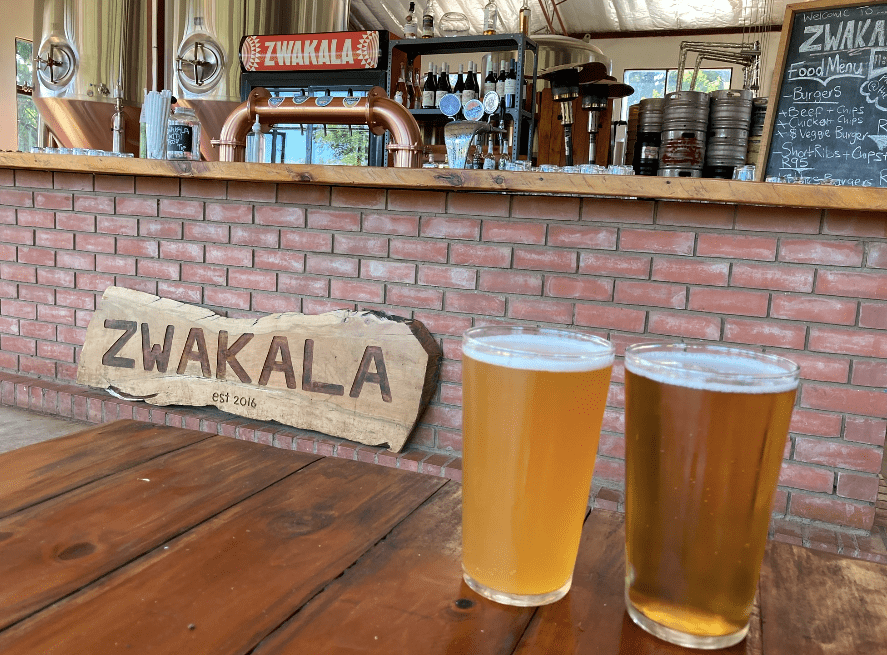
Producing delicious beer is their vocation, made with water drawn straight from the crystal-clear Broederstroom river. As our last day in the kloof drew slowly to a close, and condensation dripped from our glasses, I peered out over the rolling hills and realised that the internet was right all along. This is truly the land of the silver mist, as well as many, many wonderful trees.
Stay here
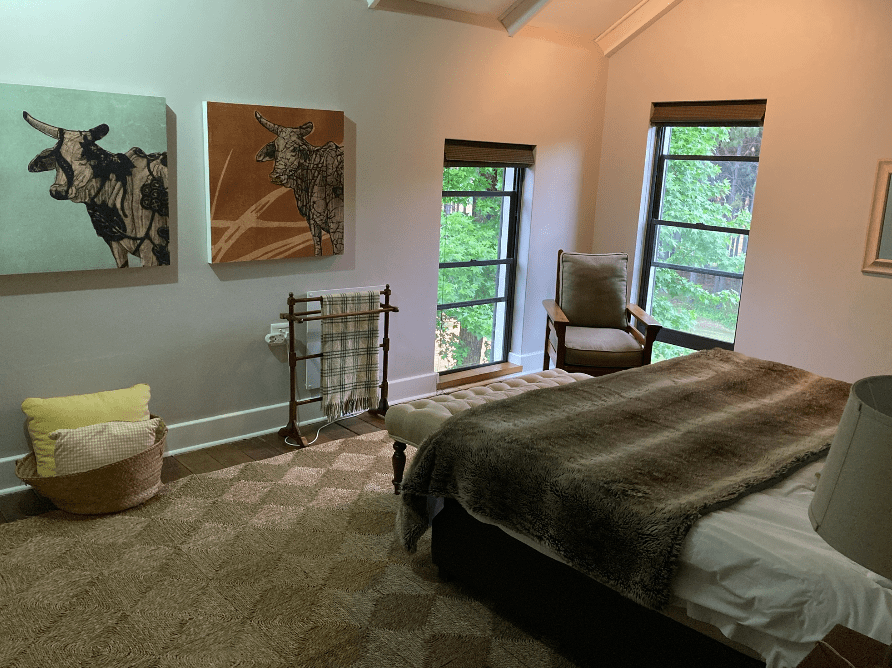
Owned and run by Glenda Hancock, Glenogle is a heavily wooded 25 ha private farm with two outstanding accommodation options – The Loft and The Stables. The former, which was fully booked when I first made contact, is a quintessential cabin in the woods, beautifully decorated and equipped for two people. Our home though for three nights was The Stables, a luxurious double-story country guesthouse with two bedrooms, an airy bathroom with a shower boasting an incredible forest view, and a large downstairs open-plan kitchen, dining-, and living-room space, with a closed-combustion fireplace to fend off chilly weather. The direct neighbours are of the well-behaved equine variety, so the name of the house is apt. Everything you could want while on holiday is there, including re-energising walks around the farm, and fly-fishing (bring your own gear) or canoeing on the dam.
083 259 8321
Google maps location, here.

Bramasole is a multi-roomed boutique guest house on an immaculate and secluded property. Each room or suite has a theme, and is decorated accordingly. The owner, it seems, has an obsession with antique barber’s chairs, so there’s no shortage of places to sit. There’s a beautiful dam next to the guesthouse, where guests can swim or paddle around on canoes when the weather is hot. And there’s no better way to spend your late afternoons than strolling on the farm roads and quiet paths that line property.
072 062 8514
Google maps location, here.
Do this
Experience the indigenous forest in an entirely unique way, at Magoebaskloof Canopy Tour.
canopytour.co.za/locations/magoebaskloof
083 866 1546
Google maps location, here.
Enjoy a meal and a pint at Kwakala Brewery, open every Friday, Saturday and Sunday.
Google maps location, here.
The Mountain Cafe at Blueberry Heights Organic Farm serves sumptuous dishes, and makes for the perfect breakfast or lunch venue.
Facebook: mountaincafeza
063 816 8206
If you’re a lover of pancakes (or waffles), head over to The Pancake House, just outside Haenertsburg.
Facebook: The Pancake House
083 444 5835
Our vehicle for the trip
New Land Rover Discovery
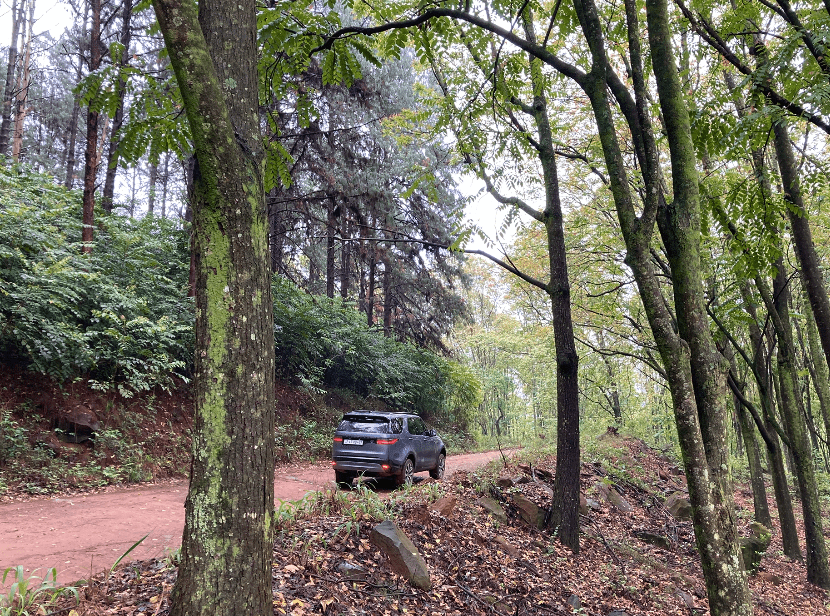
The manufacturer’s name is synonymous with exploration, and the model – Discovery – was befitting of our maiden voyage to Magoebaskloof. Land Rover kindly sponsored the vehicle for our trip, ensuring we travelled in elevated levels of comfort and safety from Joburg, up to Limpopo, and back.
The new Discovery boasts subtle styling upgrades, with a fresh LED headlight design, revised front bumper, and a gloss panel above the rear number plate that declares the model name. Inside the cabin, the centre console has been redesigned, with the new 11.4-inch Pivi Pro infotainment system and display front and centre. Two smartphones can be connected simultaneously, and the system offers Apple CarPlay and Android Auto.
Our R-Dynamic SE model featured a 3.0-litre six-cylinder turbo-diesel engine, delivering 221 kW and 650 Nm. The off-road ride height (up to 283 mm), selectable via a toggle on the console, was particularly useful on the muddy and rutted forest tracks.
ALSO READ







